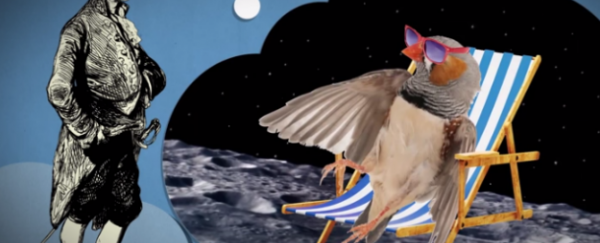In 1703, controversial Harvard scholar Charles Morton proposed that the reason some birds disappear during the winter months, is because they're vacationing on the Moon. It's a lovely idea, but Morton, come on.
For thousands of years, people have been at a loss to explain why some bird populations seem to appear out of no where during the spring, and then disappear just as quickly when winter hits. Such confusion led to some pretty wacky theories throughout human history, as Joe Hanson explains in the latest episode of It's Okay To Be Smart.
Aristotle's explanation was that they weren't actually going anywhere, they were just changing from one type of bird to another, while a medieval scholar suggested that geese in particular started out life as barnacles, so of course we didn't see them during winter - they were happily being another creature entirely, clinging to rocks on a jagged coast somewhere. Someone else suggested that they grew from trees that blossomed every spring.
The poet Homer? Well, he was cool with the idea that maybe some birds disappeared over winter because they were embarking on great journeys to some far-off location, but the common sense ends there. Homer thought they were embarking on these great journeys to battle tribes of mythical goat-riding dwarfs at the ends of the Earth.
"Fittingly, the answer to this avian enigma was delivered by a stork," says Hanson. This particular stork was pretty unlucky - it was found dead in Germany after having been shot right through by a spear. Interestingly enough, the origin of the spear was traced to sub-Saharan Africa, proving once and for all that birds spend the winter months in warmer climates, and not on the Moon.
So far, so sensible. But birds don't use calendars, so how do they know when to take off? Watch the latest episode of It's Okay To Be Smart above to find out how birds know when to pack their feathery vacation bags.
Source: It's Okay To Be Smart
